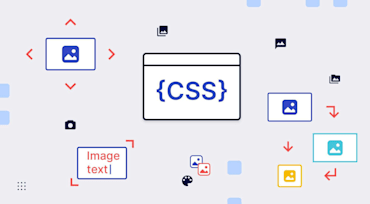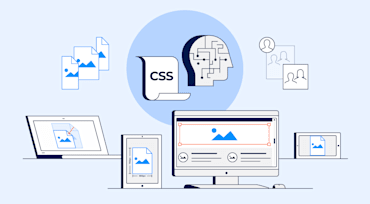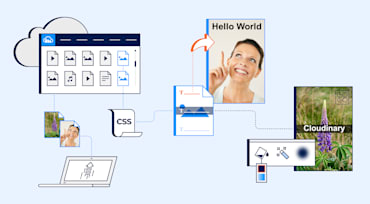CSS image overlays are a common technique for transposing text or images over each other. For example, you can combine images and text on a website when captioning an image, or place a live text element over a button.

With Cascading Style Sheets (CSS), you can style your site and transform the related images. For example, you can create static or sticky positioning for the graphics, define backgrounds and borders, resize, and create cool filters to show off the artistry.

You can transform images with CSS image filters, applying popular effects like blur, brightness, contrast, drop shadow, grayscale, hue, invert, opacity, saturate, and sepia. With Cloudinary, image-transformation tasks, such as blurring or pixelating faces, adjusting brightness and contrast, and transferring image styles, are much simpler and often automated. This article elaborates on how to do all that on both platforms.

Image effects, which you can set up with CSS, define how images are served to users. This article describes how to create basic effects, image hover, and animated images through parameter configurations in your main CSS stylesheet and—much faster and dynamically—in Cloudinary.
Here are the topics:

With Cascading Style Sheets (CSS), you can change the size and aspect ratio of images and backgrounds. Three resizing options are available: absolute resizing, retention of the aspect ratio, and relative resizing. You can also scale and fill backgrounds. However, those are all manual chores that take time, skill, and effort.

Responsive design turns 8 this year, and to celebrate, we asked experts from across the web industry a simple question: what does responsive design mean to you and your work, in 2018?
I’m fascinated by their answers. As many state, the technical aspects of responsive design – flexible grids, flexible media, and media queries – are more-or-less well understood, eight years in. But those simple-sounding ideas about CSS are still having far-reaching effects, which extend far beyond code. Below, you’ll read about responsive design’s impact on how individuals, teams, and entire organizations work and think. How should we model our content, now that it is responsively adapting to fit new and different contexts? How in the heck should we be prototyping and testing responsive designs? How can our teams and workflows be structured to better accomplish this new kind of work?

Every picture has a story to tell. But the story it tells can change when you change the color tone, saturation, contrast, or other elements of a photo.
A few years ago, post-processing a digital image generally required a high level of skill and expensive software such as PhotoShop. But in recent years, popular photo sharing apps such as Instagram, Flickr, and Snapchat started offering built-in filters. Professionals take advantage of filters to make subtle corrections or adjustments. Casual users often apply more prominent filters that add their own unique touch or just make their images more fun.
